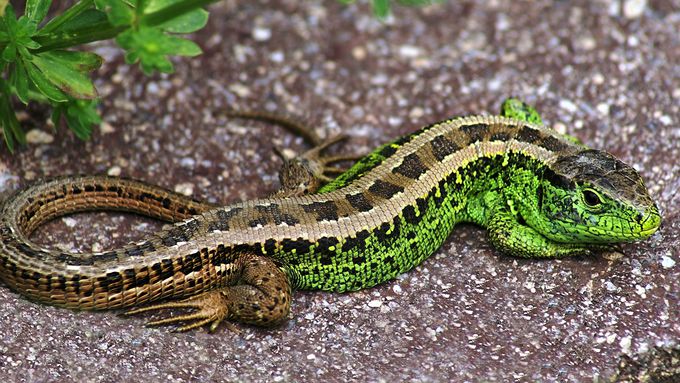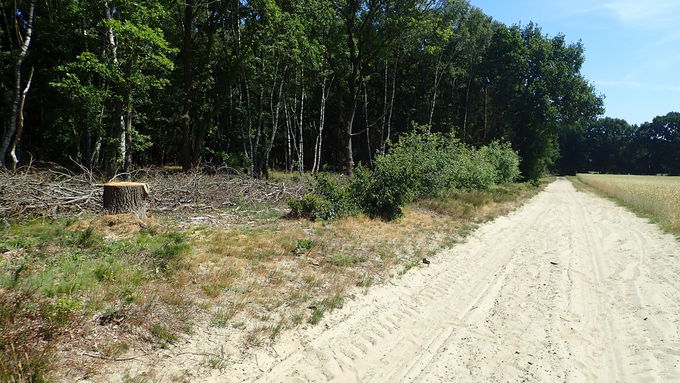Zauneidechse/Sand Lizard (Lacerta agilis) © Friedrich Böhringer, CC BY-SA 3.0
download picturemain content
Project of the month
#7/2019 SAND HABITATS IN THE DISTRICT OF OLDENBURG
Optimization of sand lizard habitats near the municipality of Prinzhöfte
In the district of Oldenburg, the sand lizard (Lacerta agilis) which is classified as endangered in Lower Saxony reaches the northwestern edge of its range. There are only very few known occurrences of this species in the district, amongst others near the municipality of Prinzhöfte. Up to 25 sand lizards were observed there in one day. Oviposition and successful reproduction with juveniles were registered as well at this location which is located on a nearly 500-metres-long sandy path bordering a field in the south and the edge of a forest in the north. Oviposition sites in this area are often situated directly on open ground at the slope edge, so that there is increasing shading due to growing trees and shrubs as well as fall of leaves. Another big problem for this occurrence of the sand lizard are large agricultural machines and quad bikes driving on the farm road. Due to the narrow width of the road, wider vehicles, in particular, often draw aside to the slope paralleling the forest edge, thereby destroying the clutches of the sand lizards.
Through volunteer activities in recent years, attempts have been made repeatedly to clear the edge of the forest from growing woods and shrubs. In February 2018, NABU Ganderkesee also cut down some 40 trees at the edge of the forest to make it lighter. The action taken in the framework of the LIFE Integrated Project ‘Atlantic Region DE’ was intended to further optimize the habitat for the sand lizard. The action was planned by the lower nature conservation authority of the district of Oldenburg and the NABU Oldenburger Land. Hans Fingerhut (NABU Ganderkesee) and Uwe Handke (NABU Delmenhorst) carried out the construction supervision.
Seven sand ridges, each 20 to 30 metres long, three to four metres wide and about 1.5 metres high, were created in January 2019 about five metres away from the sandy path, to move the oviposition sites to a large extent away from the affected wayside. Approximately 620 cubic metres of sand with some clay have been installed accordingly. In order to protect the edge of the slope and the ground of the edge of the forest from encroachment, several high excavator support mats had been mounted and were removed after the completion of the sand dunes.
By removing about 80 further trees, the shading of the sand lizard habitat was reduced and at the same time the area of suitable habitats was further increased. The tree trunks, branches and twigs were installed between the sand-ridges as small deadwood piles to create additional habitat structures for oviposition as well as basking and hiding places. In the eastern half of the edge of the forest which has a very flat slope edge, a number of tree trunks were attached with oak piles to the roadside in order to protect the edge of the forest, the sand ridge and the heathlands from driving of tractors and quads.
A large information board will be installed yet in 2019. In the years 2019 and 2021, five four-hour excursions each will be performed for monitoring the results of this measure and the distribution of the sand lizards will be documented.





